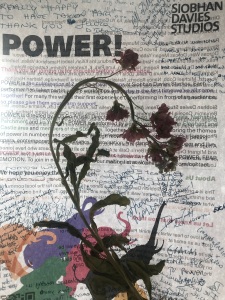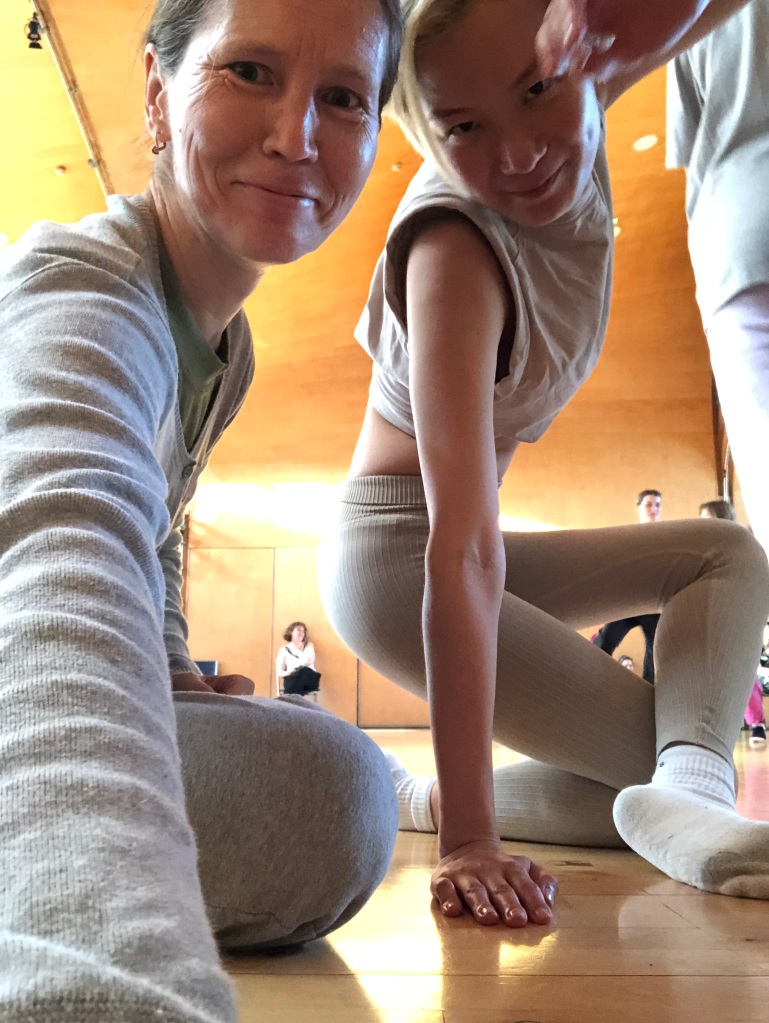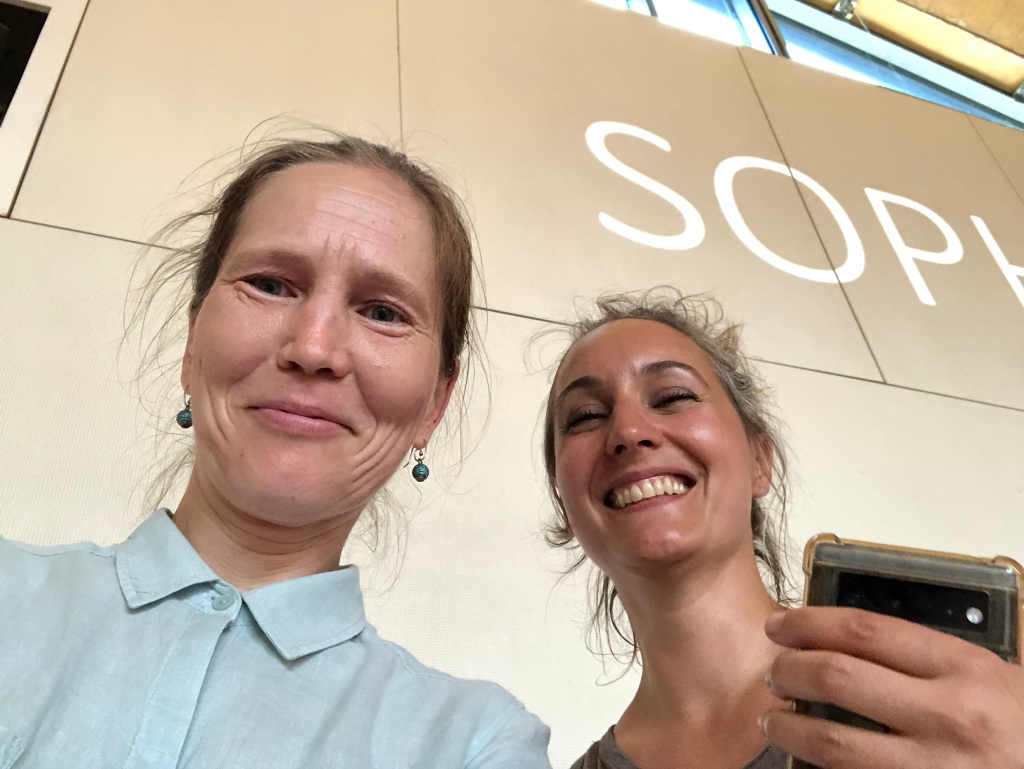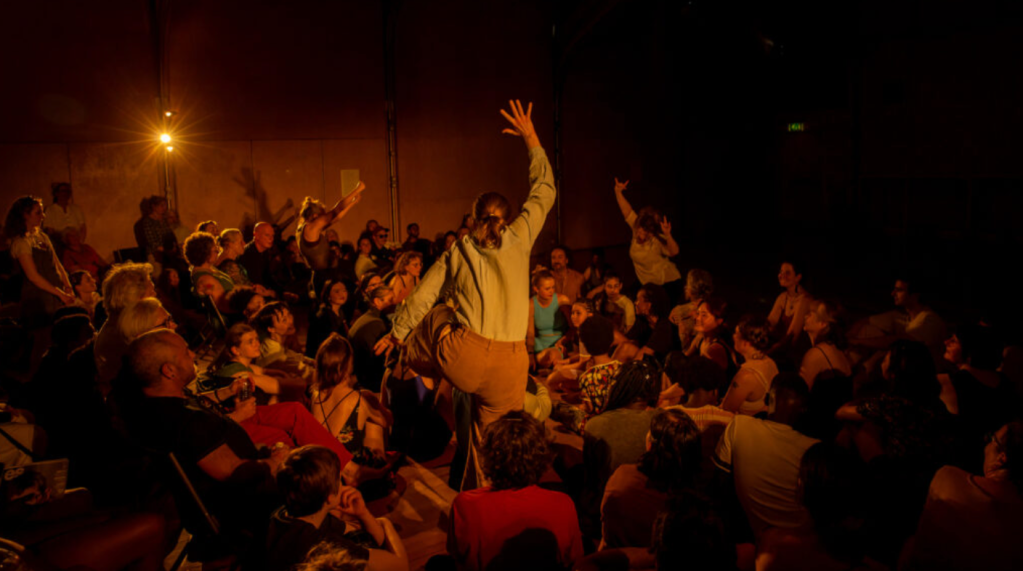I will write down a reflection on my recent performance experience, which became to me remarkable and significant. It was my first appearance in a performance presented in-person since pre-pandemic (since February 2020), and the project made it possible for me to perform for the first time in London (since I moved here in June 2021).*
I participated in the POWER community dance performance created for a diverse group of people who were eager to perform. Participants varied in age, ability, cultural background, profession, and gender (for sure, in something else I cannot think/remember of). And I am deeply grateful that I was also included and welcomed. The project was organised by Siobhan Davies Studios and led by choreographers and dance artists Annie Pui Ling Lok, Jia-Yu Corti, Nathaniel Parchment, and dramaturg and architect Juan Ayala. Annie and Juan gave the overall directions and instructions, and all three dance artists brought their dance material to the table and rehearsed their pieces accordingly. Nathaniel taught us some steps from social line dances such as jive and electric slide. Jia-Yu gave us a few short dance sequences built on Tai Chi. Annie’s dance phrase was somatic-based, slow, and repetitive [in a good sense]. We practiced for two hours four times weekly from May 30 to June 10 and performed for the public audience [the show was sold out] in the Roof Studio at Siobhan Davies Studios on June 10. About 60 people participated and they were divided into three groups based on time availability: gathering in the morning / in the afternoon / in the evening accordingly. Three times we rehearsed altogether, and this schedule seemed to work very well for everyone.
Transformations of the roof studio’s space impressed me since I had been there many times before but did not have a chance to see its capacities in terms of lighting. They used a bit of stage lighting mounted on the ceiling and the walls, manipulated natural lighting contributions, closing and opening window blinds automatically. The audience was moved in space all the time [about ten? times], being everywhere / on the side / in the centre; combined with changes in different stage lighting and the use of natural lighting, it created an impression of a constant transformation and flow of the audience and the dancers, mixing dancers with the audience often. It made the performance powerful and dynamic, and two hours flew unnoticed.
An electronic musician (Andreas Levisianos) participated in a few rehearsals and accompanied our movement during the performance. It was vital for the dance performance since music/sound impacts the audience’s perception. Besides, the control over the duration of each part was divided between the performers, the musician (with a change in music), and, possibly, the lighting technician (with a change in lighting).
Above everything else in this project, I appreciated that any concern (which I raised) was eventually resolved (not ignored). In my eyes, the leaders (Annie, Juan, Jia-Yu, and Nathaniel) were responsive to the needs of each individual and did their best to be helpful to everyone. At the end of each meeting, they invited us to speak to them, and they were open to listen to all the concerns and did everything to resolve them. Just as a notice to myself: if I have an issue and do not voice it, it is unlikely that it will be addressed. When something bothers me, it might be uncomfortable to speak it loud, but keeping it to myself will not help the situation to be changed. A community performance project can be seen as a model of an ideal society where we can learn/practice how to co-exist happily in a group.
At the end of the last rehearsal, one hour before our show, Annie told us that now the performance belongs to us. They gave us the power over the work. They gave us an agency. Thus, the piece could emerge and evolve through the given structure and with the given material, variously interpreted by people of different ages, backgrounds, and abilities.
I almost forgot that about 1/3 of my performance projects (to be exact, 9 out of 32) embraced non-professional dancers to support other people in their desire to dance and perform. I understand (I have myself) the deeply seated longing for dance. However, I worked with small and much less diverse groups. What the personnel of Siobhan Davies Studios made is beyond imaginable for me – they marvellously succeeded in this complicated task accommodating about 60 people with various experiences and warmly welcoming each of them.

Last but not least, this project let us build human relations since we saw each other regularly and shared the dance practice, which united us a bit. Sometimes we went to have lunch with other participants after the rehearsal.** They organised a party after our performance. It was a great time, and I felt happy to be a part of this beautiful community. Thank you very much for this incredible possibility!
*To be precise, I performed with Provincial Dances Theatre at The Place in 2004.
**I noticed that being offered the possibility to meet people, it does not happen by itself. It requires to show initiative: to talk to others, to invite them to join.






